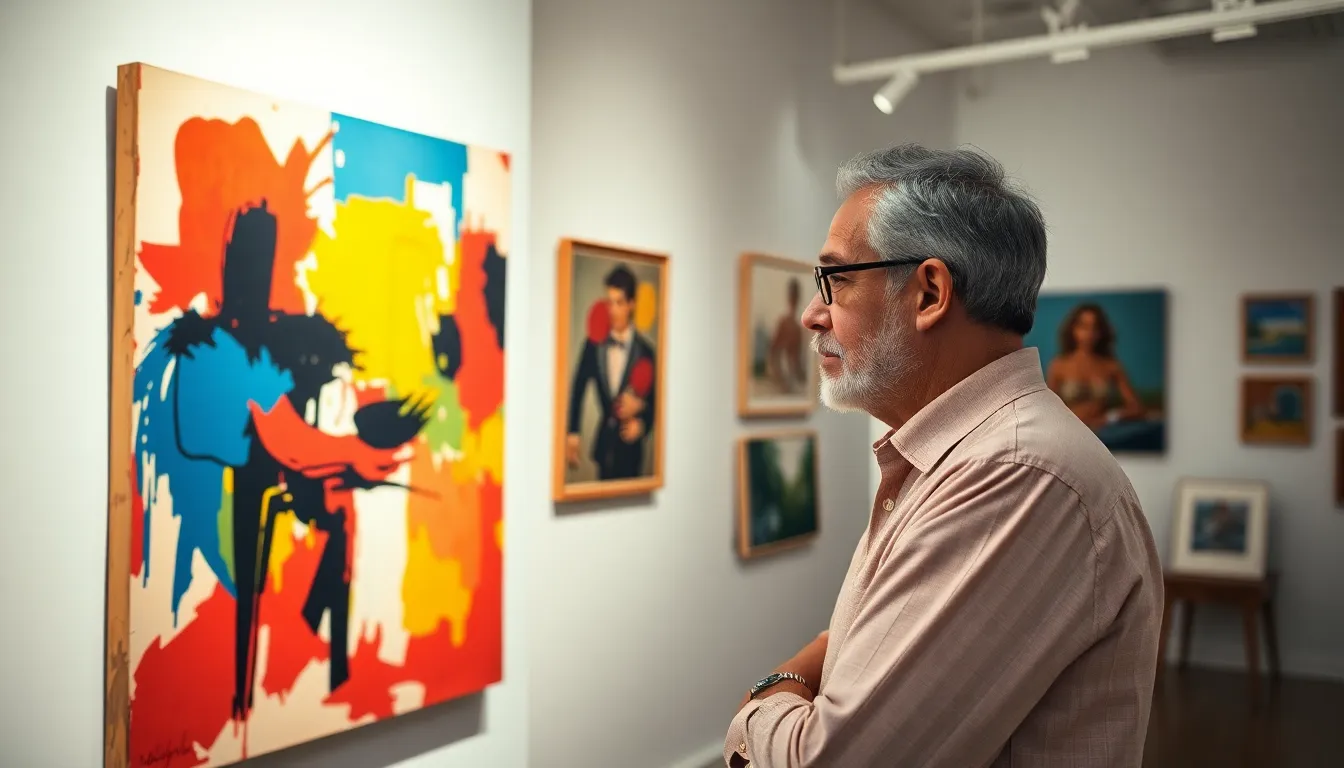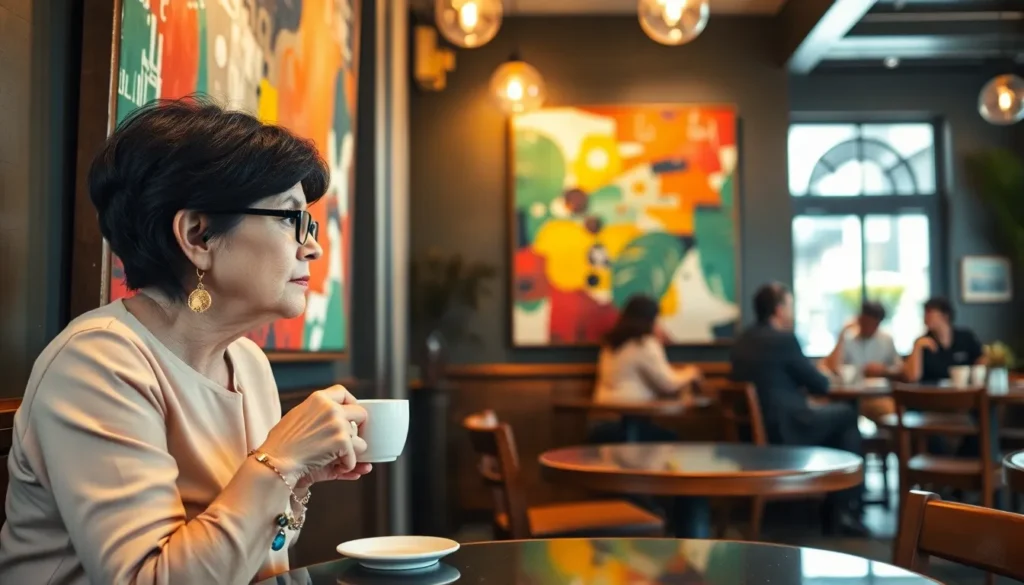Table of Contents
ToggleArt isn’t just about pretty pictures hanging on walls; it’s a vibrant conversation that sparks curiosity and ignites passion. Whether it’s a bold splash of color or a thought-provoking installation, each piece tells a story that deserves more than a passing glance. Art commentary dives into these narratives, unraveling layers of meaning that might otherwise go unnoticed.
Imagine sipping your favorite coffee while dissecting a masterpiece—sounds like a perfect blend of culture and caffeine, right? From the subtle brushstrokes to the artist’s intent, art commentary invites enthusiasts and casual viewers alike to explore the depths of creativity. So grab your beret and let’s embark on a journey through the world of art, where every canvas has a voice, and every sculpture has a secret waiting to be revealed.
Understanding Art Commentary
Art commentary involves the analysis and interpretation of artworks. It provides insights into the context, technique, and emotional resonance of each piece.
Definition and Purpose
Art commentary refers to the critical discussion and interpretation of artistic works. This form of commentary aims to reveal underlying themes and narratives. Analysts scrutinize styles, historical context, and expressive intentions. It creates a bridge between artists and audiences, fostering deeper connections. Commentaries also motivate viewers to engage critically with art, sparking emotions and thought.
Importance in Art Critique
Art commentary plays a crucial role in art critique. It encourages a dialogue about the various interpretations of artworks. Critics and viewers alike benefit from examining different perspectives and contexts. Insightful commentary exposes viewers to diverse art movements and philosophical ideas. An informed critique enriches appreciation, guiding audiences beyond surface-level observations. Engaging with thoughtful commentary can significantly deepen one’s understanding of art’s impact on society and culture.
Types of Art Commentary

Various forms exist within art commentary, each serving distinct purposes. Understanding these types enhances the overall engagement with artworks.
Visual Analysis
Visual analysis examines the elements and principles of design within an artwork. Color choices impact mood and atmosphere, while composition affects viewer focus. Shapes and lines create movement, guiding the eye through the piece. By studying texture, one can uncover tactile qualities that enhance meaning. Artists often use symbolism to communicate deeper themes, which visual analysis helps to reveal. This process fosters a more profound appreciation and understanding of the artist’s intent.
Historical Context
Historical context situates artwork within its specific time period and cultural background. Understanding an era’s socio-political influences shapes how viewers interpret a piece. Innovations in technology and artistic movements also impact artistic expression. Artists frequently respond to historical events, using their work to comment on society. Recognizing these connections enhances the viewer’s comprehension of the artwork’s significance. This context provides insight into the motivations behind various styles and techniques used by artists throughout history.
Notable Art Commentators
Art commentators play a crucial role in shaping the discourse surrounding art. Their insights illuminate the various layers of meaning behind artworks.
Influential Critics
Prominent critics like Robert Hughes and Rosalind Krauss have transformed art commentary. Hughes, known for his passionate and incisive critiques, highlighted contemporary art’s role in society. Krauss brought attention to the theoretical aspects of modernism and postmodernism, emphasizing contextual interpretation. These critics have set standards in the art world, influencing how both artists and audiences perceive art.
Contemporary Voices
Today, voices like Jerry Saltz and Hito Steyerl redefine art commentary. Saltz’s reviews bring striking observations that provoke thought and engage a wider audience. Steyerl integrates media theory with political analysis, challenging traditional narratives in art. Both commentators encourage a fresh dialogue, making art accessible while exploring complex themes. Their diverse perspectives contribute to a richer understanding of contemporary issues in the art landscape.
The Role of Art Commentary in Modern Culture
Art commentary serves a critical function in understanding and appreciating artworks. It connects viewers to deeper meanings while shaping cultural conversations.
Social Media Impact
Social media platforms have transformed art commentary through instant sharing and interaction. Instagram and Twitter allow art critics to express opinions, reach broader audiences, and engage in real-time discussions. Visual content thrives in these spaces, with hashtags enhancing artwork visibility. Critics and artists utilize these platforms to spark conversations and challenge conventional narratives. Engagement metrics, such as likes and shares, often reflect audience reactions, allowing commentators to gauge public interest. This dynamic environment promotes diverse interpretations while democratizing access to art insights.
Accessibility to Audiences
Accessibility remains a priority in modern art commentary. Online platforms facilitate discussions, breaking geographical barriers. Viewers can access critiques, discussions, and analyses from anywhere in the world. Educational resources enhance understanding, providing context for various artworks. Engaging formats, such as podcasts and videos, appeal to different preferences, expanding reach. Commentary that addresses cultural and social themes resonates with broader audiences. As a result, more individuals engage with art on a personal level, leading to enriched experiences and enhanced appreciation for the art world.
Art commentary invites individuals to dive deeper into the world of creativity and expression. By engaging with art on a meaningful level it becomes possible to uncover the stories and emotions woven into each piece. This exploration not only enriches personal experiences but also fosters a broader dialogue about cultural and societal influences.
As art continues to evolve in the digital age the accessibility of commentary enhances the appreciation of diverse perspectives. Whether through traditional critiques or modern social media discussions the importance of art commentary remains clear. It serves as a vital link between artists and audiences encouraging a shared journey of discovery and understanding.



